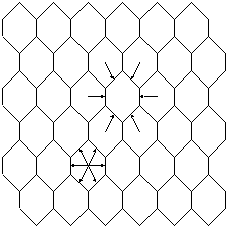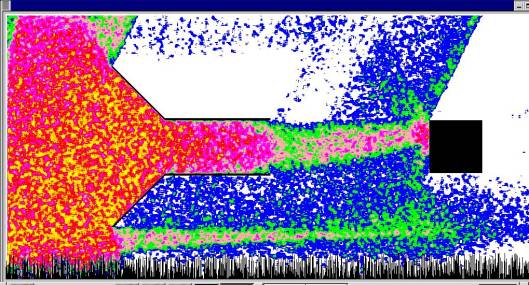
Story
Assignment
Competition
Rules
Sequential
Code
Since the Race Trap did not work Wile need a new approach. The reasoning is that if the RoadRunner is so fast, then it must be very light, and if it is so light is can easily be caught by the wind. All that is needed is something to help the wind blow the RoadRunner into a net - and it is dinner time!
Wile has bought a huge funnel from ACME. The idea is that Wile can use the natural occurring wind as a source, and by concentrating this wind the RoadRunner can be blown into the net.
The problem is that the concentrated wind need to hit the RoadRunner at a distance of at least 5 meters and the concentrated wind must be at least 90% of the wind that was collected, otherwise there is not enough power to catch the RoadRunner. To tell if the trap works we need to simulate it in a windtunnel, fortunately Wile lives in a two dimensional world, so the windtunnel may be simulated via a Lattice Gas Automaton.

Lattice trap layout.

The result of the wind-trap
The solution should be implemented using some approach to remote memory, RMI, RPC, Global Arrays, MPI-2 remote memory etc., and based on the sequential version below. The code should be run on from one through eight nodes.
The report should identify
the various choices that has been made as well as individual techniques
that have
been applied to improve
performance. And the impact of each should be documented. In addition the
scalability of your implementation should be discussed and the achieved
performance curve should be discussed.
Any optimization may be applied,
if and only if the result is correct and independent of the number of nodes
that
are used to achieve the
solution. Any optimization that is applied must be thoroughly described.